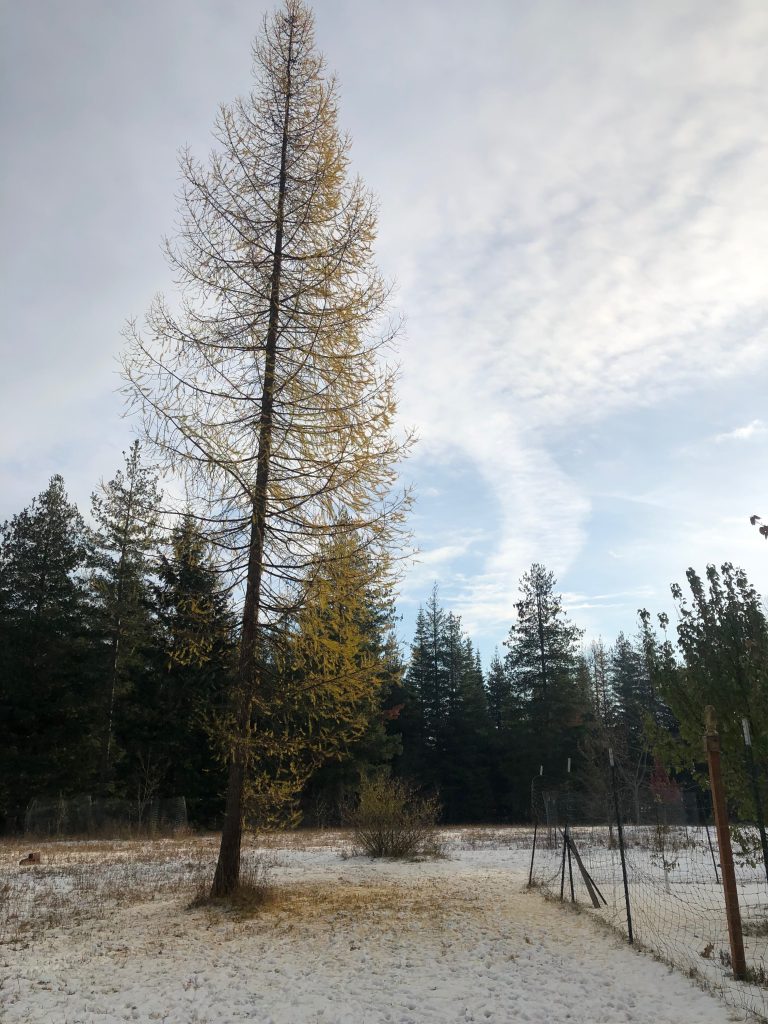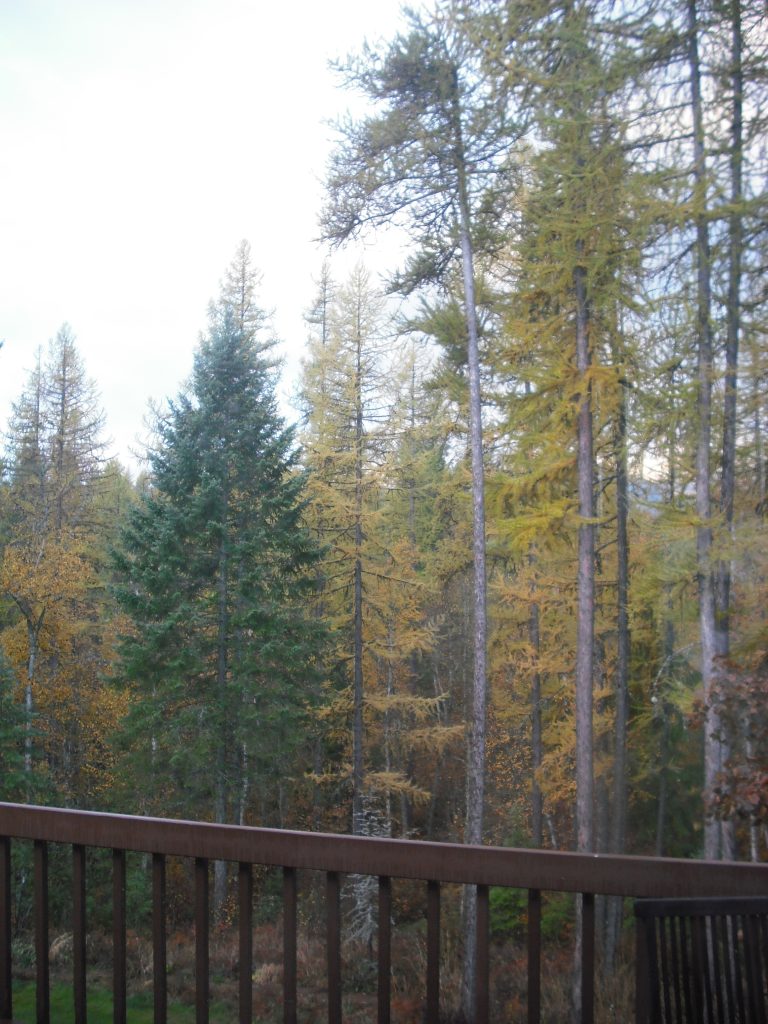Hug a Western Larch (Larix occidentalis) Today!
With our exceptionally warm October, many trees decided to just keep on photosynthesizing and put off losing their leaves. Then came a weird early cold blast paired with a few inches of heavy snow.
Now we’re experiencing the cold snap in early November that sometimes gives us an ice skating year! (Squeal!)
But this year the tamaracks got left behind.
Larch Needle Carpet
Normally we get tons of glowing needles in late fall – all over the driveway, all over the roof — all over everything.The color is exceptional — like all the sunlight of the summer condensed in tiny needles that drift en masse like the coming snow.
But this year it feels like the larches are late laying down their golden carpet of needles.
However, they are technically on time — needles usually fall after the deciduous tree leaves in November, but something weird happened this year.
The early snow and enduring cold means the needles are on top of the snow!
Tree Timing — Always Perfect
Whenever they got around to falling and even though there was snow on the ground, I’m going to trust it was the right time.
Trees continue to amaze and delight me.



| Did you know: |
| Western Larch are one of only a few deciduous conifers? Most other conifers (commonly called evergreens) keep their needles year-round. In case you’re wondering the others are : • Dawn redwood [meta-sequoia] one of the oldest trees on earth, around when dinosaurs roamed • European larch • Bald cypress • Japanese larch • Golden larch |
| They self prune by losing substantial branches pretty regularly. |
| Larch can tolerate dry landscapes and like sun. |
| Tamaracks make exceptionally gorgeous and tiny pinecones which emerge in spring a vibrant purple-magenta color. |
| In spring, its vibrant, velvety chartreuse needles signal that that warmer weather is just around the corner. |
| Buckskin tamarack is considered primo firewood — it burns hot and long. |
| Its bark protects it from forest fires. |
| Larch can grow 200 feet tall. |




